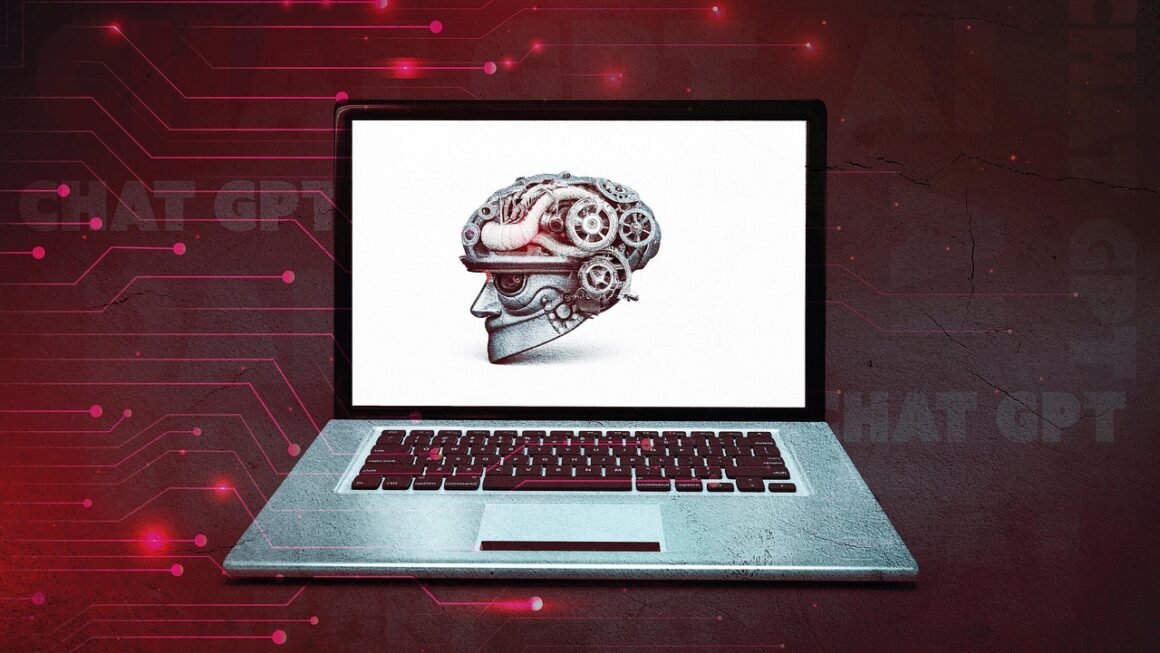Unsupervised learning. It sounds a little intimidating, doesn’t it? But fear not! This powerful branch of machine learning is all about uncovering hidden patterns and structures within data without any prior labels or guidance. Think of it as letting the data speak for itself, revealing insights you might never have anticipated. Whether you’re trying to segment customers, identify anomalies, or reduce the dimensionality of your dataset, unsupervised learning offers a versatile toolkit for making sense of the unknown. Let’s dive in and explore the fascinating world of algorithms that learn without being told what to learn.
What is Unsupervised Learning?
The Core Concept
Unsupervised learning is a type of machine learning algorithm used to draw inferences from datasets consisting of input data without labeled responses. The goal is to discover hidden patterns, group data points, or reduce the dimensionality of the data. Unlike supervised learning, which relies on labeled data to train a model, unsupervised learning algorithms must find structure and relationships within the data on their own.
Key Characteristics
- No pre-defined labels: The algorithm receives unlabeled data and must determine the underlying structure.
- Exploratory analysis: It’s often used to explore the data and discover previously unknown patterns or relationships.
- Data transformation: Unsupervised learning can transform data into a more manageable and interpretable form.
- Versatile applications: It finds applications in various fields, including customer segmentation, anomaly detection, and recommendation systems.
Supervised vs. Unsupervised Learning: A Quick Comparison
To better understand unsupervised learning, it’s helpful to compare it with its counterpart, supervised learning:
| Feature | Supervised Learning | Unsupervised Learning |
|——————-|—————————————————-|—————————————————-|
| Input Data | Labeled data (features + target variable) | Unlabeled data (features only) |
| Goal | Predict the target variable based on the features | Discover hidden patterns or structure in the data |
| Examples | Classification, Regression | Clustering, Dimensionality Reduction |
| Evaluation | Accuracy, Precision, Recall, RMSE | Silhouette Score, Davies-Bouldin Index |
Common Unsupervised Learning Algorithms
Clustering
Clustering is perhaps the most well-known unsupervised learning technique. It aims to group similar data points into clusters based on their inherent characteristics. The goal is to maximize the similarity within clusters and minimize the similarity between clusters.
- K-Means Clustering: A centroid-based algorithm that partitions data into k clusters, where each data point belongs to the cluster with the nearest mean (centroid). A common approach is to use the Elbow Method to determine the optimal value of k.
Example: Segmenting customers based on their purchasing behavior. You might identify segments such as “High Spenders,” “Occasional Buyers,” and “Value Seekers.”
- Hierarchical Clustering: Creates a tree-like structure (dendrogram) that represents the hierarchical relationships between data points. Can be agglomerative (bottom-up) or divisive (top-down).
Example: Classifying different species of animals based on their physical characteristics.
- DBSCAN (Density-Based Spatial Clustering of Applications with Noise): Groups together data points that are closely packed together, marking as outliers points that lie alone in low-density regions.
Example: Identifying fraudulent transactions by detecting unusual patterns of activity.
Dimensionality Reduction
Dimensionality reduction techniques aim to reduce the number of features in a dataset while preserving its essential information. This can simplify the data, improve model performance, and reduce computational cost.
- Principal Component Analysis (PCA): A linear dimensionality reduction technique that transforms data into a new set of orthogonal variables called principal components. The first principal component captures the most variance in the data, the second captures the second most, and so on.
Example: Reducing the number of features in an image dataset while retaining its key visual characteristics.
- t-Distributed Stochastic Neighbor Embedding (t-SNE): A non-linear dimensionality reduction technique particularly well-suited for visualizing high-dimensional data in lower dimensions (e.g., 2D or 3D).
Example: Visualizing clusters of documents based on their content.
- Autoencoders: Neural networks trained to reconstruct their input. The hidden layer acts as a compressed representation of the input, effectively reducing dimensionality.
Example: Anomaly detection by identifying data points that are poorly reconstructed by the autoencoder.
Association Rule Learning
Association rule learning discovers relationships between variables in a dataset. This is commonly used in market basket analysis to identify products that are frequently purchased together.
- Apriori Algorithm: A classic algorithm for association rule mining that identifies frequent itemsets and generates association rules.
* Example: In a supermarket, discovering that customers who buy diapers are also likely to buy baby wipes. This knowledge can be used to optimize product placement and marketing promotions.
- Eclat Algorithm: Uses a depth-first search approach to find frequent itemsets, often performing better than Apriori for datasets with many long itemsets.
- FP-Growth Algorithm: Builds a frequent-pattern tree to efficiently discover frequent itemsets without generating candidate sets.
Use Cases and Real-World Applications
Customer Segmentation
Unsupervised learning can be used to segment customers into distinct groups based on their demographics, purchasing behavior, website activity, or other relevant characteristics. This allows businesses to tailor their marketing efforts and improve customer satisfaction.
- Example: A retail company uses K-Means clustering to segment its customers into groups based on their spending habits. They identify segments such as “High-Value Customers,” “Budget Shoppers,” and “Occasional Spenders.” The company can then create targeted marketing campaigns for each segment.
Anomaly Detection
Unsupervised learning algorithms can identify anomalies or outliers in a dataset. This is useful for detecting fraudulent transactions, identifying defective products, or monitoring system performance.
- Example: A bank uses an autoencoder to detect fraudulent credit card transactions. The autoencoder is trained on normal transaction data, and any transaction that is poorly reconstructed by the autoencoder is flagged as potentially fraudulent. Statistical methods (like calculating z-scores) also fall within the purview of anomaly detection and can be considered unsupervised if no labels are involved.
Recommendation Systems
Unsupervised learning can be used to build recommendation systems that suggest products or services to users based on their past behavior or the behavior of similar users.
- Example: A streaming service uses clustering to group users with similar viewing habits. When a new user joins the service, they are assigned to a cluster based on their initial viewing choices. The service then recommends movies or TV shows that are popular within that cluster.
Image and Text Analysis
Unsupervised learning techniques can be used for image compression, image segmentation, and topic modeling in text data.
- Example: PCA is used to reduce the dimensionality of images for faster processing and storage. Latent Dirichlet Allocation (LDA) is used to discover the underlying topics in a collection of documents.
Evaluating Unsupervised Learning Models
Challenges in Evaluation
Evaluating unsupervised learning models can be more challenging than evaluating supervised learning models because there are no ground truth labels to compare against. However, there are several metrics and techniques that can be used to assess the quality of the results.
Common Evaluation Metrics
- Silhouette Score: Measures the similarity of a data point to its own cluster compared to other clusters. Values range from -1 to 1, with higher values indicating better clustering.
- Davies-Bouldin Index: Measures the average similarity ratio of each cluster with its most similar cluster. Lower values indicate better clustering.
- Calinski-Harabasz Index: Measures the ratio of between-cluster variance to within-cluster variance. Higher values indicate better clustering.
- Visual Inspection: Often, visualizing the clusters or the reduced dimensions can provide valuable insights into the quality of the results. This is especially important when selecting the number of clusters for K-Means.
Practical Tips for Evaluation
- Domain Expertise: Incorporate domain knowledge to assess the meaningfulness of the discovered patterns.
- Business Objectives: Evaluate the results based on their impact on business goals. For example, does the customer segmentation lead to improved marketing effectiveness?
- Qualitative Analysis: Conduct qualitative analysis by examining the characteristics of the clusters or the top features identified by dimensionality reduction.
Conclusion
Unsupervised learning is a powerful tool for exploring data, uncovering hidden patterns, and gaining valuable insights. From clustering customers to detecting anomalies, its applications are vast and diverse. While evaluating unsupervised learning models can be challenging, the metrics and techniques discussed here provide a solid foundation for assessing the quality of your results. By understanding the principles and techniques of unsupervised learning, you can unlock the potential of your data and drive better decision-making. Embrace the unlabeled world and let your data tell its story!



